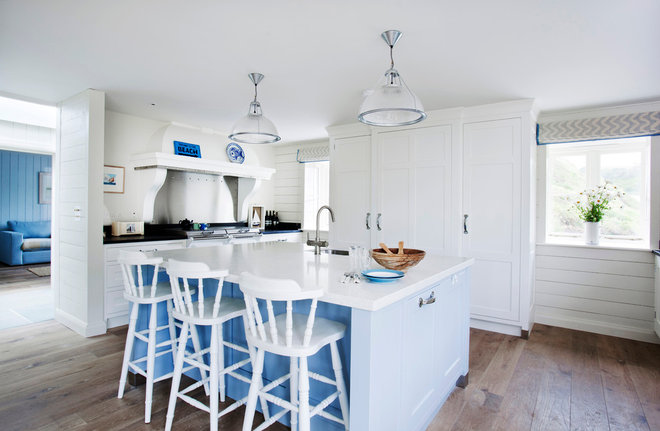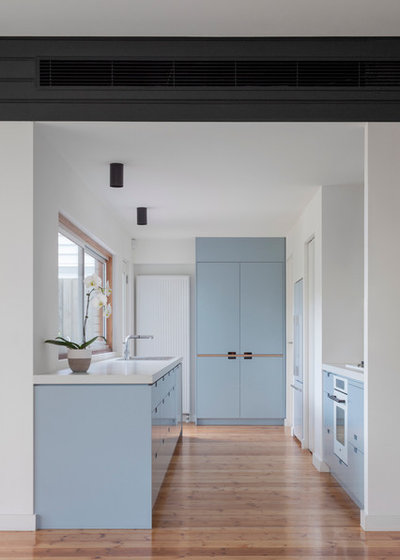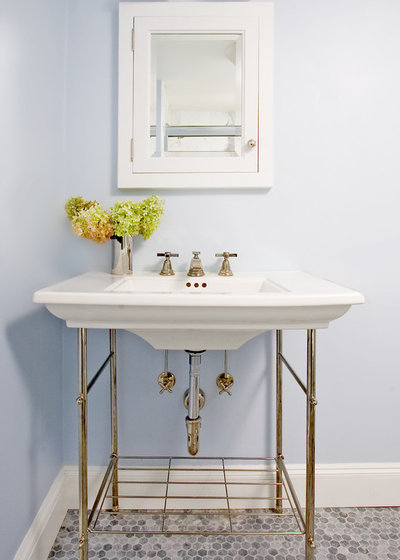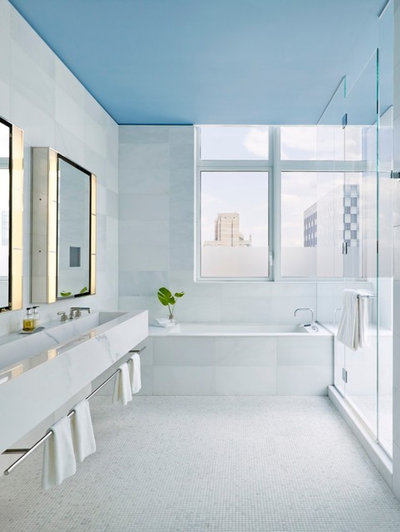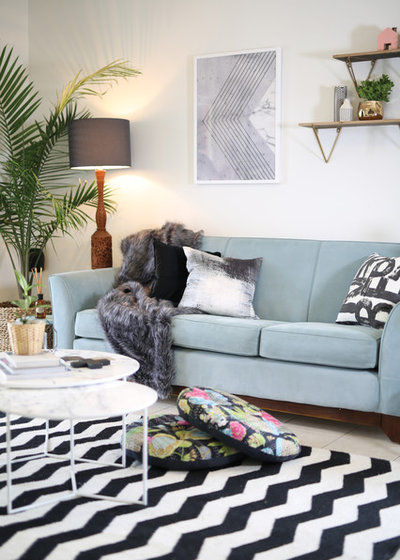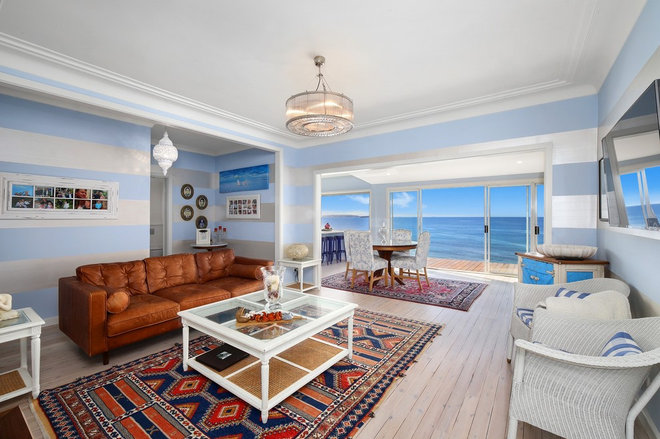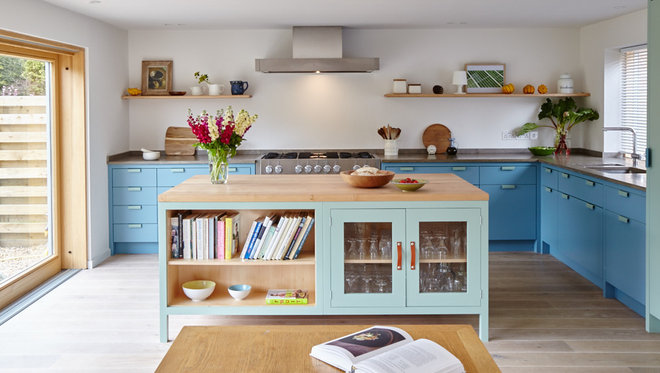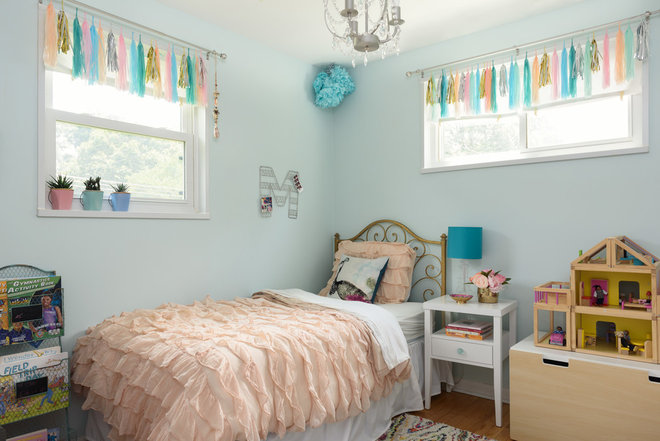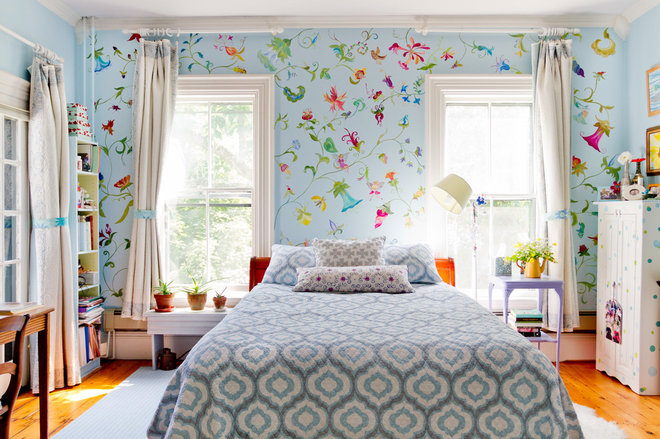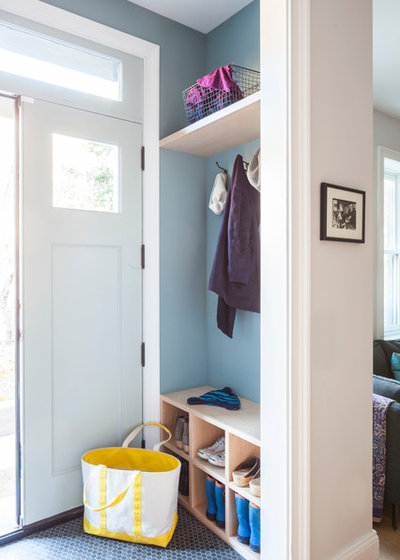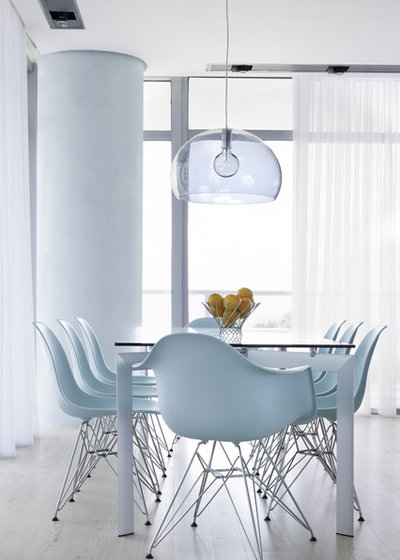In part one we discussed how leather was created and the different types of leather. In part two we'll look at Dye and Protective Coatings.
Full
Aniline Dye: - Hides are immersed in a transparent aniline dye allowing
the natural markings to show through then rotated on drums until the
dye completely penetrates from front to back. No protective coat is
applied making the most luxurious of leathers. Generally reserved for
premium leathers, it's also the reason they're so vulnerable to stains.
As it is a natural product, variations throughout the grain will be seen
on the final product.
Semi-Aniline
Dye: - Used on corrected leathers. Despite the name, hides are dyed
through but then a layer of pigment is sprayed on top to even out
variations. A thin coat of lacquer seals in the colour, resulting in
leather that's almost as soft as premium leather, yet harder wearing and
protected against fading and staining.
Surface
Pigment: - Used only on the cheapest hides, primary bi-casts. The
pigment sits on top and is sealed with lacquer resulting in stiffer
surface. Easily identified because the back is not the same colour as
the front. The raw hide will show through if nicked or scratched and is
susceptible to cracking and splitting.
Quality
leather isn't an expense, it's an investment that looks better the more
you use it. There's a place for bi-cast and bonded leathers but it's a
false economy to think they are cheaper. Top grain full and semi-aniline
dyed leathers cost more up front but last longer, age well and hold
their value better.
It's confusing out there. Terms like "All
Leather" and "Top Grain Seating" can lead you to believe you're looking
at a quality piece of furniture when it's just the opposite. If you know
what you are looking for though, it makes it that much easier to ask
the right questions.
Thursday, 22 September 2016
Let's Talk Leather - Part 1
From Hide to Leather:
After cleaning and conditioning, hides are sorted according to quality. Because leather furniture requires large unblemished hides, it is the most expensive upholstery covering per square foot. The outside surface of the hide is cut away from the rest and reduced by a series of rollers to a thickness between 0.9 and 1.4mm. Because the cells are closer together in this layer, it's the strongest, most supple and durable part of the hide. The layer below - called the split - is thicker and stiffer but not as strong.
Real Leather, Fake Leather & The Stuff In-Between:
Top Grain Leather: - The outer layer - or top grain - is the most desirable for furniture. Nature adds its share of markings, often requiring sanding, protein injection treatments to retain suppleness and a protective coating. This process - called correction - adds heat and light protection and makes it more resistant to spills. The more correction, the lower the quality. Those top grain hides requiring no correction, the rarest and most expensive are called full grain or full top grain. These premium leathers are incredibly comfortable because the leather can breathe. However, they are susceptible to staining and marking.
Bi-Cast Leather: - Made from the split hide below the top grain, it's vinyl coated to resit cracking, splitting and peeling. While this helps, it doesn't come near matching the durability and fell of top grain leather.
Bonded Leather: - The leather equivalent of particleboard, it contains only about 17% leather in the backing. What looks like leather is actually vinyl.
After cleaning and conditioning, hides are sorted according to quality. Because leather furniture requires large unblemished hides, it is the most expensive upholstery covering per square foot. The outside surface of the hide is cut away from the rest and reduced by a series of rollers to a thickness between 0.9 and 1.4mm. Because the cells are closer together in this layer, it's the strongest, most supple and durable part of the hide. The layer below - called the split - is thicker and stiffer but not as strong.
Real Leather, Fake Leather & The Stuff In-Between:
Top Grain Leather: - The outer layer - or top grain - is the most desirable for furniture. Nature adds its share of markings, often requiring sanding, protein injection treatments to retain suppleness and a protective coating. This process - called correction - adds heat and light protection and makes it more resistant to spills. The more correction, the lower the quality. Those top grain hides requiring no correction, the rarest and most expensive are called full grain or full top grain. These premium leathers are incredibly comfortable because the leather can breathe. However, they are susceptible to staining and marking.
Bi-Cast Leather: - Made from the split hide below the top grain, it's vinyl coated to resit cracking, splitting and peeling. While this helps, it doesn't come near matching the durability and fell of top grain leather.
Bonded Leather: - The leather equivalent of particleboard, it contains only about 17% leather in the backing. What looks like leather is actually vinyl.
The Hottest New Neutral: Sky Blue
Inject some subtle energy into your neutral palette with a dose of this faint blue hue
By Yanic Simard - Houzz Contributor
For years, interior design has been in a color-conservative period, with only the strictest noncolors being considered neutrals — and a cool gray or “greige” being king. However, people lately are rediscovering the joy of adding color to the home with “near neutrals,” versatile colors that can act as neutrals yet still inject some energy into a color scheme.
The hottest of them all? One could argue it’s sky blue. This timeless color has become a trendy yet classic choice for adding life to decor of any style, without clashing with other colors or overloading the senses. If your home is feeling a little ho-hum, maybe sky blue is the new neutral for you.
Sky Blue and White
A blue sky with white fluffy clouds is a classically beautiful sight we could stare at all day. One of the reasons sky blue and white are such a powerful pair is that bright blues help white appear extra-white, meaning white cabinetry or porcelain will look simply striking.
Another reason is that the combination looks so natural that the blue can almost go unnoticed. The supersaturated sky blue shown here isn’t overbearing, and the room still ultimately feels like a coveted “white kitchen.”
Blue paint: Cook’s Blue, Farrow & Ball; cabinet paint: Wimborne White, Farrow & Ball
See more eye-catching blue islands
A blue sky with white fluffy clouds is a classically beautiful sight we could stare at all day. One of the reasons sky blue and white are such a powerful pair is that bright blues help white appear extra-white, meaning white cabinetry or porcelain will look simply striking.
Another reason is that the combination looks so natural that the blue can almost go unnoticed. The supersaturated sky blue shown here isn’t overbearing, and the room still ultimately feels like a coveted “white kitchen.”
Blue paint: Cook’s Blue, Farrow & Ball; cabinet paint: Wimborne White, Farrow & Ball
See more eye-catching blue islands
The whitening effect of sky blue
is especially noticeable in a bathroom with a classic white sink and
tub. The porcelain will pop, as will other accents like baseboards, trim
and frosty glass lamp shades.
And since it’s sky blue, why not
use it overhead? Colored ceilings are a tempting trend that some are
wary of trying, but nature has already trained our eyes to expect this
color overhead. It feels so natural, in fact, that you might not even
immediately notice a blue ceiling when you walk into a room.
It can also be effective for giving a bathroom without windows the feeling of having a skylight, making this a great option for condos and apartments. Plus it’s a very doable one-day DIY project.
Similar blue paint: Respite, Sherwin-Williams
It can also be effective for giving a bathroom without windows the feeling of having a skylight, making this a great option for condos and apartments. Plus it’s a very doable one-day DIY project.
Similar blue paint: Respite, Sherwin-Williams
Sky Blue With Neutrals
Mixed with a diverse palette of neutral hues (such as taupe and gray), sky blue injects a sense of color without drawing so much attention as to break up the breezy atmosphere. In fact, the way it contrasts with a warm neutral like sandy beige helps bring out the hidden undertones. Notice how the slightly off-white sofas and thin golden barcart pop against the soft blue curtains in this photo. The overall effect is subtle and peaceful but not drab.
Mixed with a diverse palette of neutral hues (such as taupe and gray), sky blue injects a sense of color without drawing so much attention as to break up the breezy atmosphere. In fact, the way it contrasts with a warm neutral like sandy beige helps bring out the hidden undertones. Notice how the slightly off-white sofas and thin golden barcart pop against the soft blue curtains in this photo. The overall effect is subtle and peaceful but not drab.
Sky blue also holds up to dramatic modern patterns. Try mixing it with high-contrast black and white and moody grays.
Sky Blue With Bold Color
The real magic of sky blue, however, is in how it can mix with bold hues as well as with quiet neutrals. Like a great pair of jeans, a blue wall can disappear into the background when used with more colorful pieces, so the overall look is color-rich but not clashing.
The real magic of sky blue, however, is in how it can mix with bold hues as well as with quiet neutrals. Like a great pair of jeans, a blue wall can disappear into the background when used with more colorful pieces, so the overall look is color-rich but not clashing.
As I’ve written about before,
blue is strikingly beautiful as a tone-on-tone look, with contrasting
shades coordinating easily even if some have hints of differing
undertones. This kitchen eschews super-safe navy for a mix of two bright
blues, yet it doesn’t feel loud or busy.
Pair sky blue with a dominant
accent color and it lets the hotter hue be the star of the show. Classic
decor manuals would insist that blue is a “boy color,” but this child’s
bedroom feels dreamy and feminine with blue walls, while letting the
pink frills be the first thing you notice.
Because blue is a near-neutral
rather than a true neutral, it can actually help bridge the gap between
the neutrals and the vivid colors in a room, making the entire space
feel more harmonious. If this room had neutral walls and upholstery, the
Persian-style rug would be a major contrast, but here the many elements
keep the eye moving without things feeling overwhelmingly eclectic.
In this cheerful bedroom, a
rainbow of colors in the feature wall are tied together by the blue
background, which helps the room feel peaceful and balanced. No single
color completely stands out, but the blue doesn’t absorb them, either.
The adaptability of blue makes
it a great choice for areas that are sometimes filled in and sometimes
empty, such as a coat nook or the back of a shelving unit. The wall can
hold its own when the coat hooks are empty, yet the look isn’t
overloaded as soon as one or two items are set down.
Midcentury modern chairs in cool plastics and funky forms can sometimes come off as a little too cold. Ironically, the natural vibe of a sky blue goes a long way toward making these forms warmer, more welcoming and a little less serious. For a fun twist to any space, try a blue molded Eames chair or some airy blue-tinted glass pendants.
So go ahead, dream of a blue-sky world — and make it happen at home.
Subscribe to:
Comments (Atom)



